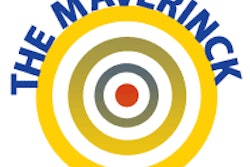Dear MRI Insider,
Researchers at the Hospital Clinic in Barcelona only started performing postmortem MRI studies on deceased and stillborn fetuses in February 2012, but they've already built up quite extensive experience in using MRI as an adjunct to traditional autopsy.
They presented their findings in this area at last month's RSNA meeting and were rewarded with a prestigious cum laude prize. We've posted a news report about this today, and you can read it by clicking here.
New information was also presented at RSNA 2014 about the use of MRI in sports medicine. A group from Hamburg-Eppendorf, Germany, found the best way to determine how long it will take a professional football player with a thigh-muscle injury to return to the field is by evaluating certain key MRI results. To learn more, click here.
MRI is a useful technique to assess most complications of hip arthroplasties, noted award-winning Spanish researchers at the Chicago congress. They anticipate there will be an increase in the demand for MRI exams to study complications. Find out more here.
Adding diffusion-weighted imaging to FDG-PET/MRI in order to stage women with primary or recurrent pelvic malignancies contributes minimal value and is not worth the additional scan time, according to another study presented at RSNA 2014. Click here for the details.
Last but not least, researchers from Tuebingen, Germany, think they may have opened a window into the development of Alzheimer's disease by combining MRI and PET to study the formation of proteinaceous deposits known as beta-amyloid plaques. Get the story here.
This letter features only a few of the many articles posted over recent weeks in the MRI Community. Please do check out the rest of our coverage below this message.




















